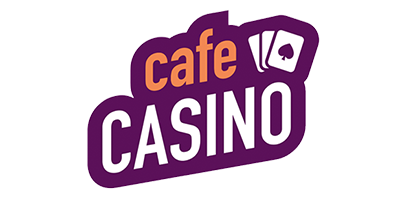Minimizing The House Edge betting strategy

Table of Contents
The house always has an advantage over the players, and this will never change unless the casinos are connected with non-profit groups. The casino’s advantage is usually referred to as the house edge in the gambling industry, and wise players can take certain measures to minimise the house edge to the lowest extent possible. Different casino games have an individual house edge, and the same concept applies to roulette. Whether you’re playing an online version, live, or land-based edition, the European and French roulette variants feature a standard house edge of 2.7%. In comparison, the American version has a higher house edge of 5.26%. How this figure is arrived at will be discussed in depth in this article.
House edge: General overview
By definition, the house edge is the statistical advantage that a casino (whether online or land-based) has over the player in any game. As mentioned earlier, each casino title has an individual house advantage, but as the main focus of this article, we’ll only discuss the roulette table game. Before we get into how to minimise the house edge in a roulette table, you need first to understand how the house edge value is arrived at in different standard variations, i.e., European, American, and French. There are various ways of calculating the built-in advantage, but our formula will be based on three variables (probability, true odds, and casino odds).
Probability
To begin with, each roulette wheel spin produces random outcomes, meaning each pocket only has two possible outcomes. i.e., win or lose. In simple terms, probability mainly shows the likelihood of any outcome to happen compared to all other potential outcomes. In mathematics, probability ranges between 0 and 1, with 0 indicating that a particular result will be impossible to happen, whereas 1 shows absolute certainty that an event will occur. For instance, if something has an even chance of occurring, then the probability would be expressed as 0.5, meaning there’s half a possibility that it’ll happen one way or the other.
When it comes to the roulette game, you’ll find a wheel with 37 or 38 pockets. These pockets represent all possible outcomes during a spin, but only one number can emerge as a winner in a round. So, for instance, what’s the likelihood of the ball landing on the 5-labelled pocket in a 37-pocket wheel? The answer is simple: there’s only one chance out of 37 possible outcomes. Therefore, to determine the probability, we’ll divide 1 (number of ways to win) by 37 (all potential outcomes), which will give a 0.027 likelihood of the ball falling on 5. In a 38-pocket wheel, the probability will be a bit lower (0.02632) since it has more potential outcomes.
True odds
Odds are almost similar to probability in that they both show the likelihood of an event occurring. However, the odds are slightly different because they compare the number of ways something can happen to the number of ways it cannot. Moreover, unlike probability, odds are expressed as ratios. For instance, in a 37-pocket roulette wheel, the odds of the ball landing on any pocket can be described as 1:36, with 36 being the number of ways to lose.
In a roulette game, each bet features individual odds, and they are displayed in reverse, i.e., ways to win against ways to lose. Let’s take an even-money bet (Red/Black, Odd/Even, and Low/High), for example. If you place your chip on any of the betting spots, the odds would be 19:18 because there are 19 ways to lose against 18 to win. On the other hand, a dozen bet features 25:12 odds. Therefore, comparing the two bets, there are more ways of losing in the dozen wager than winning. These figures are referred to as true odds, which are different from casino odds (to be discussed below).
Casino odds
Casino odds are mainly the payout odds of every bet on a roulette table, which, in reality, are slightly lower than the true odds. The payout table is usually based on the likelihood of a particular bet winning. Therefore, the less chance an outcome is likely to occur, the higher the payout. Let’s look at the Straight Up bet for an example. Wagering on a single number pays out 35 to 1. In a fair world where casinos are not making any profit, the payout would match the risk of losing, i.e., 36 to 1, which represents the true odds. In another example, the Split bet offers a 17:1 payout. However, in the real sense, this bet has true odds of 35:2, which translates to 17.5:1. As you can see, the payout odds are slightly lower than the true odds.
Thus, the lower payout odds are how casinos stay in business. The difference may seem minor to you, but over time, the small amounts make bigger profits for the house, offering an assured income in any possible scenario.
Calculating the roulette house edge
From the above demonstrations, we have clearly seen that the casino payout odds do not correspond to the true odds. Therefore, the difference between the two odds represents the house advantage. For instance, suppose you place a $1 bet on the 5-numbered betting spot, and it wins. In a non-profit platform, the payout odds would be 36:1. Meaning you’d receive your $1 stake back, plus an additional $36 as your reward, totalling $37. However, that will not be the case in a real roulette table. Instead, the casino will pay you back your $1 wager plus $35, then keep the $1 difference.
Provided that there were 36 pockets on the roulette wheel, the house edge in a straight-up bet would be 0% because, over the course of time, the land-based or online casino player would expect to win the bet every 36 spins and receive their wager back. The player could place 36 chips on the roulette table, making it one bet on each number and take away their money on whatever the outcome might be with no gain or loss. So, how do we calculate the roulette house edge?
We use a simple formula using the variables discussed above, i.e., (True odds – payout odds) x probability. This formula applies to all bets, and it’ll give you the average house edge. As previously stated, each variant has its built-in advantage. Let’s take a look below.
American roulette
The American roulette wheel comprises 38 numbered pockets, i.e., 1-36, 0, and 00. The zero-numbered pockets usually represent the house edge, but this doesn’t mean that you can’t win if you place a bet on any of the pockets. If you’ve been an avid roulette player, you have certainly noticed that the American variant usually has a 5.26% house edge. But you might be wondering how experts arrived at this figure.
So, we’ll use our formula to explain how the American roulette house edge is calculated. Suppose you place a straight-up bet on the number 12 spot on the table layout. In this case, the probability of the ball landing on that pocket is 1 out of 38 potential outcomes (0.02632). Moreover, the true odds of your bet winning are 37:1, but if you win, you’ll receive a 35:1 payout.
If we put these figures in our formula, we’ll have (37/1 – 35/1) x 0.02632 = 0.05264. Since the house edge is expressed in percentage, we’ll multiply the figure by 100, giving us 5.264%, the average house edge of a standard bet in an American roulette table. In another scenario, suppose you place an even-money bet. The probability of the ball landing on one of the numbers is 18/38, its true odds are 20:18, and the payout odds are 1:1. Therefore, (1.1111 – 1) x 0.4737 = 0.052623. If you convert it to a percentage, you’ll have an almost similar figure, i.e., 5.263%. Therefore, for every $100 you spend, you can expect to lose an average of $5.26 in the long run.
In addition, the American roulette variant offers a unique inside bet (Five-number), which comprises placing bets on 0, 00, 1, 2, and 3. However, this bet features the highest house edge, making it the riskiest bet in the roulette game. Using our formula (33/5 – 6/1) x 5/38 = 0.078947, we’ve calculated that the Five-number bet features a 7.89% house edge, meaning that for every $100 you place on it, you can expect a $7.89 loss.
European roulette
The European variant is played using a 37-pocket wheel (1-36, and 0). Like the American variation, the zero-labelled pocket represents the European roulette house edge. Since it has fewer pockets than the double-zero wheel, the house edge is also lower. Using a similar example, suppose you place a chip on the betting layout for a straight-up bet on number 12. In this case, the probability of the ball’s final resting place being in that pocket is 1 out of 37. On the other hand, the true odds for the bet winning are 36:1, and if it wins, you’ll receive the standard 35:1 payout.
Therefore, per the formula (36/1 – 35/1) x 1/37 = 0.02703, the European roulette variant has an average house edge of 2.703%, almost half of the American edition. If we use a different example, like the six-line bet, the result will remain the same, i.e., (31/6 – 5/1) x 6/37 x 100= 2.703. Thus, for every $100 you spend on a European roulette table, you can expect an average loss of $2.7.
French roulette
Like the European version, the French roulette variant uses a single-zero wheel, meaning it features 37 numbered pockets (0 and 1-36). Since it only has one zero, like the European variant, the house edge is also the same, 2.7%. However, this variant offers two exclusive rules (En Prison and La Partage), significantly lowering the house edge to 1.35%. But how do the rules apply when playing for real money?
For starters, suppose an online casino player places an even-money bet, and the ball lands on the zero-labelled slot. In this case, if the French variant you’re playing has the En Prison rule, then it will be applied. This means the player can decide to cash out half of their wager untouched or leave the whole amount untouched (imprisoned) for the next round. However, if the player imprisons the wager and the ball lands on the zero slot again, they’ll lose the whole bet amount.
Like the En Prison rule, the La Partage rule is applied to even-money bets. However, the La Partage option allows you to share the bet amount with the casino if the ball lands on the zero-numbered pocket. If such an instance occurs, you’ll receive half of your stake back, and the house will keep the other half.
Summary to minimising the house edge betting strategy
With all of the above being said, the essential roulette strategy is to play at the table, where it reduces the house edge to the least possible. It’s really not that confusing, and the results will surprise the player. In this case, we recommend playing the French and European variants as they feature a lower house edge of 2.7% compared to their American counterpart, whose house edge is 5.26%. In addition, you should find an online casino offering a French variation with either La Partage or En Prison rules because they further minimise the house edge from 2.7% to 1.35%.

 friendly
friendly










